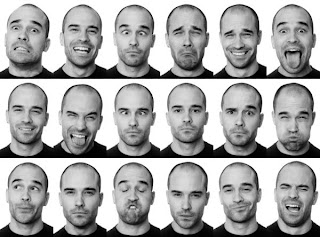Advances in communication technology have greatly altered the way organizations communicate today compared to 100 years ago. The introduction of the telegraph in the 1800s was the first breakthrough in communication which improved the speed of communication over distances by an obscenely large amount. Since this time, technologies such as telephones, radios, televisions, computers, photocopiers, transistors, electronic mail, facsimile, the internet (and many more) have been used to improve communication in organizations.
Some advantages of these technologies include faster message transmission, being able to work from different locations, transmission to greater numbers of people (and in different locations), and communicating at different points in time (such as by email) (Miller 2009).
Two important theories exploring the use of communication in organizations are:
The Media Richness Model
In this model, there are four characteristics which show the capabilities of communication to convey information. These are:
1. The availability of instant feedback;
2. The use of multiple cues;
3. The use of natural language; and
4. The personal focus of the medium
(Miller 2009, p. 243).
If a communication channel uses many of these characteristics, it is considered rich media. Communication channels with little of these characteristics are considered lean media. It is argued that the form of communication used depends on the ambiguity of the task (ambiguous tasks require rich media (especially face-to-face communication) and unambiguous tasks require lean media) (Russ, Daft & Lengel 1990).
The Social Information Processing Model
This model suggests that the social environment in organizations, and shared meaning which ensues, has a greater impact on what communication channels are used (Schmitz & Fulk 1991). In this model, the four characteristics of deciding what communication technologies to use are:
1. The objective characteristics of the task and media;
2. Past experience and knowledge;
3. Individual differences; and
4. Social information
(Miller 2009, p. 244).
The effectiveness of the chosen communication technology depends on how it is used and appropriated (Miller 2009). A downfall to using communication technology can be the lack of visual and/or vocal/tone cues which add meaning to communication face-to-face. Furthermore, when this technology makes a person anonymous, it lowers inhibitions in communication and can lead to bullying (Kiesler 1992).
Social media is also being used in organizations. The importance of being social was exaggerated in the clip “social media on “the Office” for Small Business (Part One) – Facebook, Linked in, Twitter” watched in the lecture. However, it did demonstrate how organizations are commonly using social networking sites for communication in and out of organizations.
Luckily, new technologies do not completely replace older forms of communication, but instead aid them. However, the multiple ways to communicate today means workers are spending more and more time communicating and can therefore become less productive. Furthermore, irritations such as spam in e-mail, privacy concerns, constant updates in technology requiring teaching and learning, and the requirement of the relevant administration person to make certain software adjustments, can make communication technologies seem a hindrance at times (Miller 2009).
Changes in communication technology will be an ever-existing benefit and challenge to those communicating in organizations, and the history of these changes are vital to understanding communication in organizations today, and how this may change in the future.
*There was no tutorial for this topic*
References
Kiesler, S 1992, 'Group decision-making and communication technology', Organisational Behavior and Human Decision Processes, vol. 52, no. 1, pp. 96-123.
Miller, K 2009, Organizational communication: approaches and processes, 6th ed, Wadsworth, Cengage Learning, Boston, MA.
Russ, GS, Daft, RL & Lengel, RH 1990, 'Media selection and managerial characteristics in organizational communications', Management Communication Quarterly, vol. 4, no. 2, pp. 151-175.



No comments:
Post a Comment